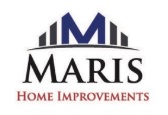When it comes to enhancing the comfort and efficiency of your home, choosing the right windows is crucial. New windows offer the potential to improve your home’s aesthetic appeal and play a significant role in its overall energy efficiency. Energy performance ratings are essential metrics that provide insight into how well your windows will perform in terms of energy efficiency, which ultimately affects your utility bills and indoor comfort. As a leading provider of quality exterior renovation services, Maris Home Improvements shares different energy performance ratings to consider when buying new windows.
The Importance of Energy Performance Ratings
Energy performance ratings are critical for homeowners looking to make informed decisions about their window replacements. These ratings, standardized by the National Fenestration Rating Council (NFRC), allow you to compare the energy efficiency of different window products easily. Understanding these ratings can help you select windows that are suited to your local climate, leading to significant savings on heating and cooling costs while ensuring a comfortable living environment year-round.
Key Energy Performance Ratings
- U-Factor: The U-factor, or U-value, measures the window’s insulating ability. It indicates how much heat can escape from your home through the window. In colder climates, opting for windows with a lower U-factor can help retain heat during the winter, reducing heating costs. Look for U-factor values typically between 0.20 and 1.20, with lower numbers indicating better insulation.
- Solar Heat Gain Coefficient (SHGC): SHGC measures the amount of solar radiation that can pass through the window, which can heat your home. In warmer months, a window with a lower SHGC is preferable to prevent excessive heat gain and reduce cooling needs. Conversely, a higher SHGC might be beneficial in colder seasons to harness the sun’s warmth.
- Visible Transmittance (VT): VT rates the amount of visible light the window lets through. High visible transmittance means more natural light enters your home, potentially reducing the need for artificial lighting and enhancing the brightness and appeal of your indoor spaces. This is particularly beneficial during shorter winter days.
- Air Leakage (AL): Air leakage rating indicates how much outside air can enter your home through the window. Particularly in areas with variable weather, choosing windows with low air leakage ratings can significantly improve your home’s comfort by minimizing drafts and preventing warm or cool air from escaping.
Additional Factors
While not always highlighted, factors such as condensation resistance and the presence of low-emissivity (Low-E) coatings also contribute to the overall energy performance of windows. For example, when choosing replacement window services, you may want to select windows with Low-E coatings to further reduce heat transfer and UV ray penetration, protecting indoor furnishings and increasing efficiency.
Choosing the Right Windows for Your Home
Selecting windows with the appropriate energy performance ratings for Chesterfield’s climate can dramatically affect your home’s comfort and energy consumption. Consider windows that strike the right balance between U-factor, SHGC, and visible transmittance, tailored to your specific needs and your home’s orientation.
If you’re looking to upgrade your windows and enhance your home’s energy efficiency, Maris Home Improvements is here to help. With a deep understanding of the unique demands of the local climate, we can guide you in selecting the perfect windows for your home. Whether you need a window or deck contractor, call us today at (636) 778-4343 or fill out our online form. Let us help you create a more comfortable, energy-efficient home today.






